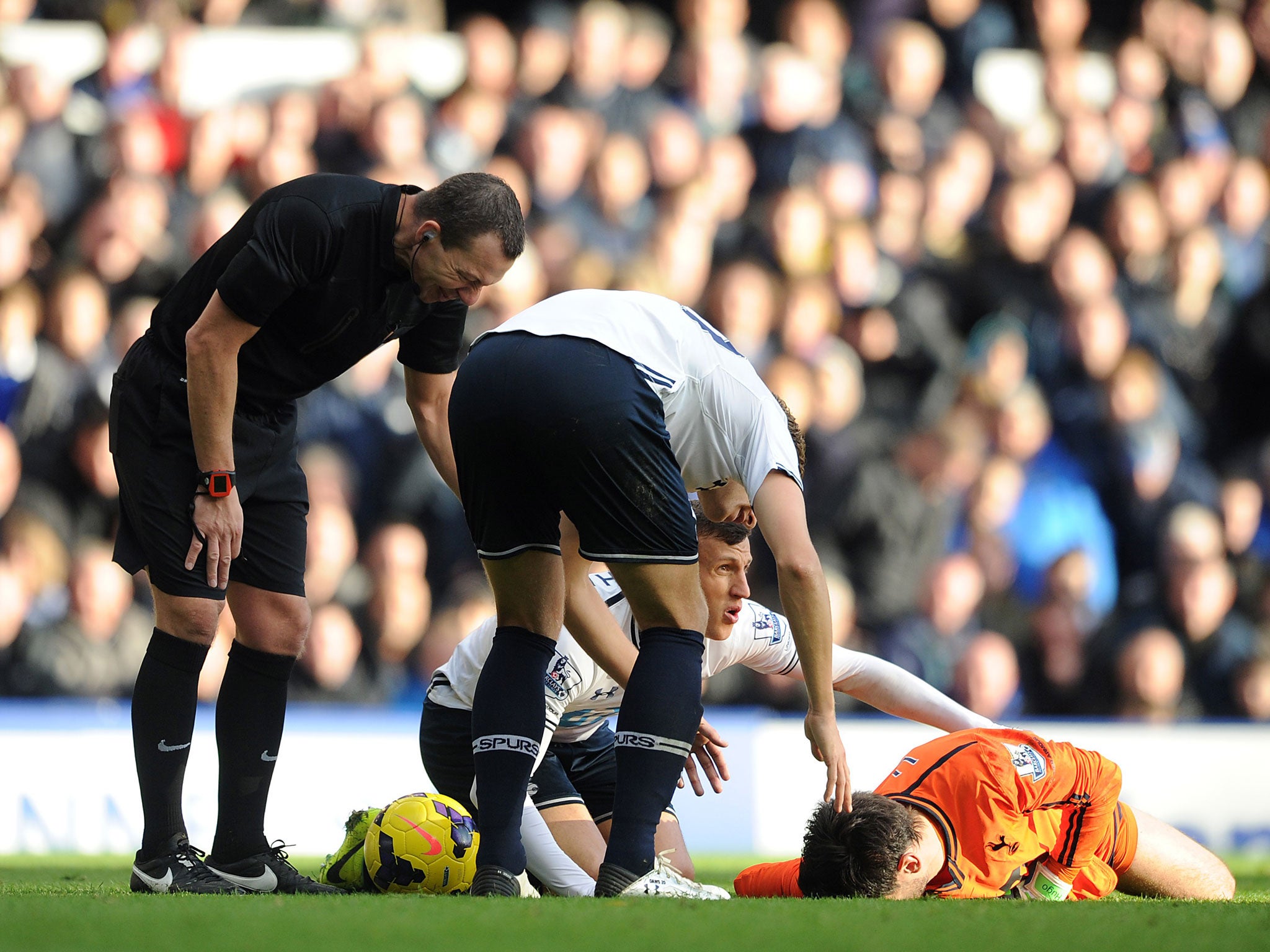AVB's decision on Hugo Lloris throws a harsh light on how different sports treat concussion

Your support helps us to tell the story
From reproductive rights to climate change to Big Tech, The Independent is on the ground when the story is developing. Whether it's investigating the financials of Elon Musk's pro-Trump PAC or producing our latest documentary, 'The A Word', which shines a light on the American women fighting for reproductive rights, we know how important it is to parse out the facts from the messaging.
At such a critical moment in US history, we need reporters on the ground. Your donation allows us to keep sending journalists to speak to both sides of the story.
The Independent is trusted by Americans across the entire political spectrum. And unlike many other quality news outlets, we choose not to lock Americans out of our reporting and analysis with paywalls. We believe quality journalism should be available to everyone, paid for by those who can afford it.
Your support makes all the difference.Having seen the furore surrounding the decision by Tottenham manager Andre Villas-Boas not to substitute concussed goalkeeper Hugo Lloris during their 0-0 draw with Everton, the question is being asked as to whether footballing authorities are doing enough to protect players from potential head injuries.
Lloris' collision with Toffees striker Romelu Lukaku visibly left the Frenchman unconscious for a short time, before being treated by the Spurs medical staff. However, with Brad Friedel ready to come off the bench, Villas-Boas elected to keep Lloris on the pitch once he had the thumbs up from the medics.
A look at the sport tells you that footballers do not go through as much physicality, especially involving the neck and head area, as other sports such as rugby and American football. However, there has been a number of head injuries this season already, with Arsenal's Mathieu Flamini, Norwich's Robert Snodgrass and Lukaku himself suffering from concussion, not to mention the neck injury suffered to Sunderland goalkeeper Kieran Westeood on the weekend. But how does the safety measures compare with those implemented in other sports?
Rugby Union has highlighted the approach to concussions other the last year with the introduction of a five-minute concussion test for any player that picks up a blow to the head or may feel groggy. Should they pass this medical test, carried out by a club doctor, the player can return to the field of play should they feel okay to do so, and on the face of things this seems to allow staff more time to analyse the extent of any such injury.
Despite the practice appearing to work, the sight of both Ireland's Brian O'Driscoll and Australia's George Smith trudging back into the pitch when they were clearly suffering from a blow to the head has put such measures into question - the four-time British and Irish Lion's own uncle resigned from his role with the International Rugby Board because of such disagreements. Should a player suffer a concussion though, there is a guidance that they should take two to three weeks to recover as with any concussion, but not a mandatory period such as football's five-day minimum rest from any competitive action.
In Rugby League, the governing bodies have acted to reduce the number of dangerous tackles that have been seen to cause head injuries, as well as adopting the NICE advised protocol when it comes to treating an injured player.
This saw the banning of the shoulder-charge tackle, a fan-favourite that often spurred on and lifted a side's performance, but also left the opponent in a not too clever condition. Though some took time to adjust to the rule change, bans were handed out to those found guilty of using the tactic in an attempt to take a zero-tolerance approach with offenders.
The NFL on the other hand has has serious troubles with concussion and the long-term effects it has in players. This culminated when four ex-NFL players sued both the league and the official helmet maker for the injuries they picked up. The tragic suicide of former pro-bowler Junior Seau saw the former linebacker shoot himself in the chest so that his brain could be examined for further knowledge of the impact that a player was suffering during his career.
Slightly wider adrift is motorsport, although again this has come into the public eye over the course of the weekend. Ferrari driver Fernando Alonso suffered a huge impact - reportedly 25G - when his car hit a kerb as he attempted to overtake Toro Rosso's Jean-Eric Vergne during the Abu Dhabi Grand Prix on Sunday. The hit forced his chassis alarm to go off - a signal to medical staff that a driver must visit the medical centre due to the excessive force that has gone through the car.
Alonso will undergo further checks to ensure that he has not suffered any injuries other than slight soreness, but there is no ruling in place that stops a driver during the course of a race if the alarm goes off and they can continue.
Join our commenting forum
Join thought-provoking conversations, follow other Independent readers and see their replies
Comments